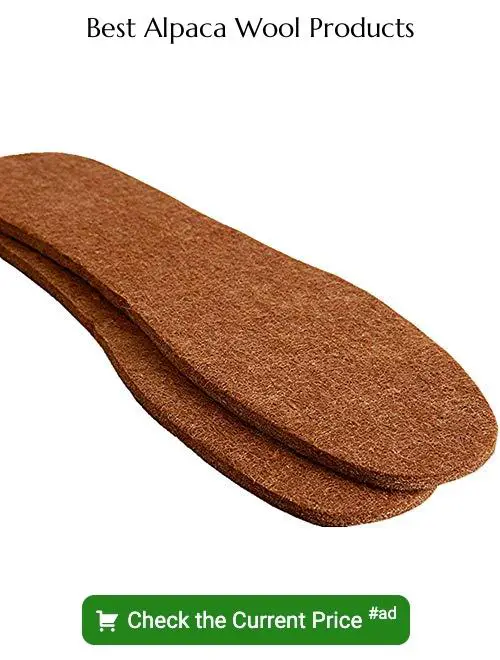Dive into the fascinating world of alpaca fiber market, a booming industry that’s gaining momentum across the globe due to its unique and sustainable features.
Alpaca fiber, renowned for its softness, warmth, and hypoallergenic qualities, is a coveted material in the textile industry. This article delves into the intriguing world of the alpaca fiber market, providing a detailed analysis of its current status, growth prospects, and key influencing factors.

With a focus on statistics, we’ll explore the production volumes, leading countries in alpaca fiber production, consumption rates, and the economic impact of this luxury fiber.
Whether you’re an investor, a yarn enthusiast, or simply curious, this comprehensive guide will offer you a clear picture of the alpaca fiber market landscape.
The Alpaca fiber market surpassed USD 3 billion in 2022
In 2022, a significant milestone was achieved in the alpaca fiber industry as the total market value exceeded three billion dollars. This surge was largely driven by a growing global interest in renewable, sustainable materials and a focus on eco-conscious fashion. Consumers are increasingly willing to invest in quality, durable goods that are not only stylish but also environmentally friendly.
As a result, demand for alpaca fiber, known for its softness, strength, and insulative properties, has seen a significant increase. This trend doesn’t show signs of slowing down, indicating a favorable future for alpaca fiber production and trade.
The market is anticipated to grow at 3% CAGR from 2023 to 2032
This promising growth trend signals a shift towards more eco-friendly natural fibers for textile production. Alpaca, in particular, due to its durability and versatility, is increasingly becoming a staple of the luxury garment industry.
The projected 3% growth rate is indicative of rising consumer awareness and demand, coupled with industry investment, in both traditional and emerging markets.
Increased farming and production of alpaca fiber is also factoring into this steady year-on-year rise, placing the industry on a firm trajectory towards achieving the expected revenue figures by 2032.
This projected growth continues to create opportunities and challenges alike for stakeholders in the fiber industry.
Product demand is due to growing consumer awareness of eco-friendly textiles
As ecological concerns gain prominence globally, an increasing number of consumers are deliberately opting for eco-friendly textiles. Alpaca fibers, renowned for being sustainable and biodegradable, align well with this movement.
This heightened environmental consciousness has significantly impacted demand, driving more individuals towards products made from this natural resource. Moreover, the process of harvesting alpaca fiber leaves a remarkably low environmental footprint, adding to its green appeal.
These factors combined continue to steer the market on an upward growth trajectory.
The market is projected to reach $4.2 billion by 2032
Encouraging predictions show a significant rise in the alpaca fiber industry in the next decade.
With a steady annual growth rate of approximately 3%, financial forecasts suggest total market value may escalate to around $4.2 billion by 2032.
This noteworthy increase is propelled by the rising consumer demand for sustainable and high-quality textiles, underlining the potential profitability of this sector for both existing market players and new entrants.
An adult alpaca produces 5 to 10 pounds of fiber per year
On an annual basis, a single alpaca offers a fiber yield ranging from five to ten pounds. This abundance varies and is highly dependent on factors such as the animal’s health, age, and breed. It is noteworthy that even with these fluctuations, the lower end of the yield range is still substantial, ensuring generous raw material for textile manufacturing.
Raw alpaca fiber sells for $2-$6 per ounce and $10 or more per ounce in a finished garment
With a price range of $2-$6 per ounce in its raw form, alpaca fiber is a valuable commodity on the textiles market. The extraction and refinement process is taken into account in this cost. However, the value of alpaca fiber sees a significant increase when used in the production of finished garments, fetching over $10 per ounce. This indicates the substantial economic potential of this fiber, driving investment and demand in the market.
Essential factors contributing to the higher price of finished products include manufacturing costs, design, marketing, and distribution expenses.
The United States imports 8,356 shipments of alpaca fibers every year
According to recent data, annual import rates in the U.S. stand at 8,356 shipments of this notable fiber. This figure elucidates the high demand and growing interest in alpaca fiber in one of the world’s largest economies, underscoring its global market significance.
In turn, this import dependency also highlights opportunities for domestic alpaca farming and fiber production endeavors.
Alpaca fibers are naturally water-resistant
Having a natural water resistance capability, alpaca fibers can effectively repel moisture due to their unique microscopic structure. When exposed to wet conditions, the fibers swell and enhance the fabric’s ability to ward off water.
This micro-level defense mechanism aids in keeping the garments dry, improving the comfort and warmth provided by these fibers.
This hydrophobic property makes alpaca fiber products a preferred choice for outdoor attire and winter wear, underlining the fiber’s versatility and value in the textile sector.
Studies show that if alpaca fiber is worn in a 0-degree F environment, the alpaca would give 50-degree F comfort
The impressive insulating properties of alpaca fiber contribute significantly to its increasing popularity in the textile industry. This material garners particular attention for its capacity to provide remarkable warmth in extremely cold conditions.
Research has corroborated this claim by demonstrating the material’s ability to sustain comfort at an impressive 50 degrees Fahrenheit, even when the surrounding temperature plummets to zero degrees Fahrenheit.
Such distinctive thermal conductivity makes garments made of alpaca fiber highly sought-after in colder climates, enhancing its market value.
There are over 200 shades of Alpaca fiber
This incredible variety stems from the fact that alpaca fiber is not only available in a diverse spectrum of natural shades – including whites, blacks, browns, and grays – but can also be dyed easily.
Consequently, the capacity for color variation is immense. Whether you’re interested in earthy, natural hues, vibrant, rich tones, or gentle pastels, there’s an alpaca fiber shade that perfectly caters to your preference.
The versatility provided by this extensive color range additionally facilitates a broad range of applications for the fiber in the textile industry, from clothing and accessories to home decors.
References:
- https://www.gminsights.com/
- https://alpacameadows.com/
- https://www.volza.com/
- https://www.alpaca4less.com/





